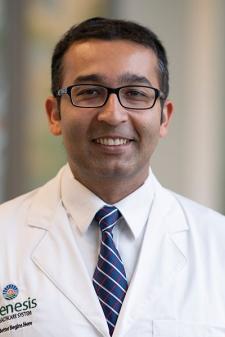1 Smoking: Patients with Patients with prior history of heart attack, stent in arteries of heart or bypass surgery (coronary artery disease),stent in the leg(peripheral vascular disease) and paralysis (stroke) should quit smoking . Smoking cessation increases the life span of individual. Studies have shown that from age 45 years to 65 years,quitting smoking increases the life span by 3 to 5 years where as in women up to age of 75 years, get this benefit of longevity. Even in heavy smokers (≥20 cigarettes/day), cessation lowers heart disease risk within 5 years of smoking cessation. Multiple methods have been recommended with variable success rate. CHANTIX (varenicline) (RR 2.6) has been shown to be most effective. , WELLBUTRIN (bupropion) (RR 1.4) and individual counseling (RR 1.6) all increase success rates for smoking cessation.
2 Fat: There are primarily primarily three types of fats: Polyunsaturated fatty acid, Trans fatty acid and Saturated fatty acid.
A) Polyunsaturated fats (−25%), monounsaturated fats (−15%), and to a lesser extent carbohydrates from whole grains (−9%), were all associated with reduced risk of heart attack when iso- calorically substituted for dietary saturated fat. Examples: Vegetable oils, safflower, sunflower, sesame, soybean, and corn oils.
Polyunsaturated fat is also the main fat found in seafood. Salmon, anchovies, herring, sardines, Pacific oysters, trout, Atlantic mackerel, and Pacific mackerel are high in EPA and DHA and lower in mercury.
B) Trans fatty acids, formed during industrial processing of fats, have unfavorable effects on total cholesterol (increase) and HDL-C (decrease). On average, a 2% increase in energy intake from trans fatty acids is associated with a 23% higher CHD risk( Examples: Fried fast food, bakery products, processed food. Companies are allowed to list 0 grams of trans fat as long as a product has less than 0.5 grams per serving in U.S.A.
3 Salt: Salt: In a meta-analysis, salt reduction of 2.5 g/day resulted in a 20% reduction of heart attack and paralysis(Atherosclerotic vascular disease ) events. A reduction in sodium intake may reduce SBP by, on average, 5.8 mmHg in hypertensive, and 1.9 mmHg in normo-tensive patients. In most Western countries, salt intake is high (≈9–10 g/day), whereas the recommended maximum intake is 5 g/day. Teaspoon contains 6 gram of salt. Optimal intake might be as low as ≈3 g/day. Potassium substitute can be considered as well.
4. Fiber: Each 7 g/day higher intake of total fiber is associated with a 9% lower risk of heart attack and blockade in heart arteries. (RR. A 10 g/day higher fiber intake was associated with a 16% lower risk of stroke (and a 6% lower risk of type 2 DM .
5.Fruit & Vegetables: A meta-analysis reported a 4% lower risk in CV mortality for each additional serving of fruits (equivalent to 77 g) and vegetables (equivalent to 80 g) per day.
6.Meat: Recent analysis showed that higher intake of processed meat and unprocessed red meat is associated with a 7% and 3%, respectively, increased risk of ASCVD. By reducing processed meats, salt intake will also be reduced.
7.Nuts: A meta-analysis of prospective cohort studies suggested that daily consumption of 30 g of (mixed) nuts was associated with a ≈30% lower risk of blockade in arteries.
8.Soft Drinks and Beverages: The WHO guideline recommends a maximum intake of 10% of energy from free sugars (mono- and disaccharides), which includes added sugars as well as sugars present in fruit juices.
In the EPIC (European Prospective Investigation into Cancer and Nutrition) cohort, both artificially and sugar-sweetened soft drinks were associated with all-cause mortality, while only the former was associated with circulatory diseases.
9.Diet: The Mediterranean diet includes high intakes of fruits, vegetables, pulses, wholegrain products, fish, and olive oil, moderate consumption of alcohol, and low consumption of (red) meat, dairy products, and saturated fatty acids. Greater adherence to a Mediterranean diet is associated with a 10% reduction in CV incidence or mortality and an 8% reduction in all-cause mortality. Following a Mediterranean diet enriched with nuts over a 5-year period, compared with a control diet, lowered the risk of blockade in arteries (ASCVD )by 28% and by 31% with a diet enriched with extra-virgin olive oil.
10.Exercise: Aerobic Physical activities include walking, jogging and cycling., Adults are recommended to perform at least 150–300 min a week of moderate-intensity PA, or 75–150 min of vigorous-intensity PA, or an equivalent combination of both, spread throughout the week.
Compared to no leisure time physical activity (0 MET-h/wk), low levels of leisure time physical activity, i.e., 0.1–3.74 MET for an hour/wk and 3.75–7.4 MET-h/wk, had life expectancies that were higher by 1.8 years and 2.5 years, respectively. Levels at or just above the minimum level recommended by guidelines (7.5–14.9 MET-h/wk) were associated with even lower risks of death and higher life expectancies (3.4 y higher). Sedentary time is associated with greater risk for several major chronic diseases and mortality.
Exercise METS CORRESPONDING ACTIVITY
| Light | 1.1–2.9 | Walking <4.7 km/h, light household work |
| Moderate | 3–5.9 | Walking at moderate or brisk pace (4.1–6.5 km/h), slow cycling (15 km/h), painting/decorating, vacuuming, gardening (mowing lawn), golf (pulling clubs in trolley), tennis (doubles), ballroom dancing, water aerobics |
| Vigorous | ≥6 | Race-walking, jogging, or running, cycling >15 km/h, heavy gardening (continuous digging or hoeing), swimming laps, tennis (singles) |
References:
1. https://journals.plos.org/plosmedicine/article?id=10.1371/journal.pmed.1001335
2. https://academic.oup.com/eurheartj/article/42/34/3227/6358713

Dr Bharat Marwaha, MD is practicing Cardiologist in U.S.A. He has published and presented more than 15 articles including in top 2 Journals of Cardiology in United States. He has received an “Academic Excellence Award” during his training. He has represented Ohio States at National Jeopardy Quiz Contest for doctors. He is a reviewer for Journal of Translation Medicine and Cureus.
















Nice article, Thax for the information